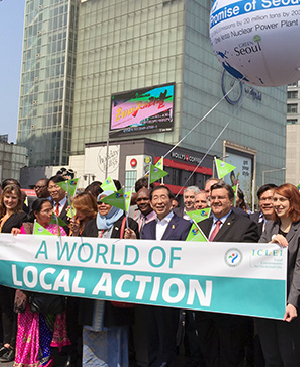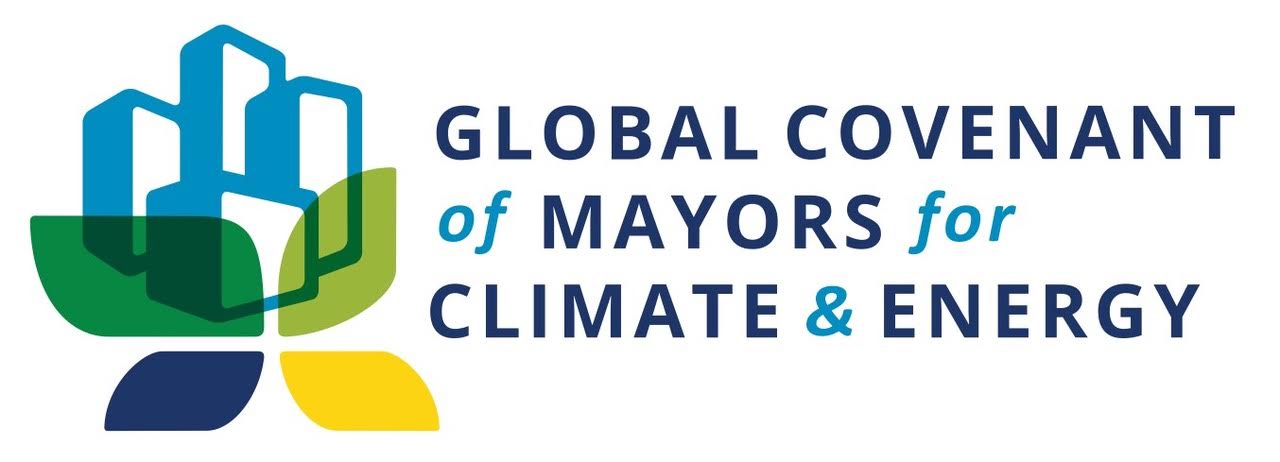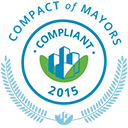- Home
- Reporting entities
- City of Cleveland, OH
City of Cleveland, OH
United States Mayor: Frank G. Jackson-
Population 389521

-
Area 213.6km 2
-
GDP 100 BillionUSD
-
Targets by N/A N/Aemission
Targets by City of Cleveland, OH
There are no targets yet
- Start year: 2006
- Type: Policy/Strategies/Action Plans
- Status: Completed
The City has developed the following three policies to promote more sustainable transportation options:
1. Complete and Green Streets
2. Anti-idling
3. Bicycle Transportation Safety
- Transport
- Start year: 2012
- Type: Technical/Infrastructure investment
- Status: Completed
Replacement of convection unit heaters in several fire station garages with radiant heaters.
Read More Read Less- Buildings
- Start year: 2009
- Type: Public Participation/Stakeholder engagement
- Status: In operation
As part of the SC2019 initiative, Mayor Frank G. Jackson hosts annual summits, bringing together a diverse group of people vested in and dedicated to Cleveland to use their vast knowledge and imagination to create an action plan for building a green economy for Cleveland’s future. The summits incorporate the Appreciative Inquiry method (AI) as the facilitation method. AI is a collaborative, interactive, and action oriented process for creating change. We are doing more than having conversations; we are planning how we will solidify Cleveland’s sustainable future.
Read More Read Less- Residential
- Commercial
- Industrial
- Transport
- Waste
- Start year: 2013
- Type: Policy/Strategies/Action Plans
- Status: In operation
The purpose of the SC-MAP is to accelerate progress in a more coordinated manner and help the City achieve even more significant outcomes. To identify the best opportunities for accelerating sustainability across City operations, a baseline inventory was conducted to estimate current levels of GHG emissions, energy use, water use, and associated utility costs. In 2010, total emissions for the City were approximately 400,000 Metric Tons of Carbon Dioxide equivalent (MTCO2e), equaling about 5% of all emissions generated within Cleveland city proper. The SC-MAP contains overarching GHG reduction goals below 2010 baseline of 10% by 2016, 20% by 2020, and 45% by 2030. These goals will be achieved by implementing 25 actions outlined in the plan.
Read More Read Less- Buildings
- Facilities
- Transport
- Waste
- Start year: 2014
- Type: Policy/Strategies/Action Plans
- Status: In operation
The City of Cleveland’s Bikeway Implementation Plan is designed to increase the number of bikeway miles by 250% by the end of 2017. The plan builds on Cleveland’s existing bike infrastructure and leverages the City’s five year capital improvement program (CIP) to accomplish this significant increase while adding minimal cost to street projects.
Read More Read Less- Transport
- Start year: 2009
- Type: Technical/Infrastructure investment
- Status: In operation
Icebreaker, the initial project, is designed to be a catalyst to building an industry in Ohio by capturing first-mover advantages associated with job creation and economic development. Icebreaker will consist of nine Siemens 3.0 MW direct drive turbines (27 MW) located 7 miles northwest of Cleveland. Icebreaker will be the first freshwater project in North America and the first to withstand significant foundation icing conditions.
Read More Read Less- Start year: 2010
- Type: Fiscal / Financial mechanism
- Status: In operation
Residents and developers seeking tax abatement for residential projects must meet Cleveland Green Building Standards found in the Cleveland Green Building Standard Handbook. For the average house this equals about $2000/year in savings. Over 500 projects have received the tax abatement.
Read More Read Less- Buildings
- Start year: 2013
- Type: Policy/Strategies/Action Plans
- Status: Completed
The Mayor’s Office of Sustainability convened a 50-member Climate Action Advisory Committee with representatives of leading Cleveland organizations from the commercial, industrial, educational, government, and non-profit sectors to inform and create the Climate Action Plan.
The Cleveland Climate Action Plan contains an overarching greenhouse gas (GHG) reduction goal of 80% reduction below 2010 emissions by 2050, with interim goals of 16% reduction by 2020 and 40% reduction by 2030. The goals are designed to be bold yet achievable.
Goals will be achieved through implementation of the 33 actions outlined in the plan, split into 6 focus areas:
Energy Efficiency and Green Building;
Advanced and Renewable Energy;
Sustainable Mobility;
Waste Reduction and Resource Conservation;
Land Use and Clean Water; and
Community Engagement and Public Health.
- Residential
- Commercial
- Industrial
- Transport
- Waste

- Start year: 2011
- Type: Policy/Strategies/Action Plans
- Status: In operation
Residential energy efficiency retrofit program targeted towards middle income residents (complements weatherization programs for low income residents). City has partnered with local non-profits to implement program. Program offers Cleveland residents: low-cost energy audit, detailed energy report noting areas with most potential for savings, rebates and incentives towards approved retrofit work and low-interest (2.3%) financing options to qualified residents.
Read More Read Less- Buildings
- Start year: 2013
- Type: Policy/Strategies/Action Plans
- Status: In operation
In 2013, the City of Cleveland adopted a Sustainable Municipal Building Policy to yield savings by efficiently managing energy, water, waste, and stormwater at City facilities, while improving the employee and visitor experience. The policy requires that green building practices are incorporated into the siting, design, construction, remodeling, repair, maintenance, operation, and deconstruction of all City facilities.
Read More Read Less- Buildings
- Start year: 2012
- Type: Public Participation/Stakeholder engagement
- Status: In operation
In 2012, The City of Cleveland joined the Cleveland 2030 District and the Better Buildings Challenge. The 2030 District works to create a coalition of building owners, service professionals and community stakeholders working together to rapidly transform the built environment of the city through large-scale reductions in energy use, water use and GHG-emissions. The City was the first member. The Better Buildings Challenge, a White House and Department of Energy initiative, supports building owners by providing technical assistance and proven solutions for energy efficiency. As part of the Challenge, the City of Cleveland has committed to reducing its building energy usage 20% by 2020, using a 2010 baseline.
Read More Read Less- Commercial
- Start year: 2013
- Type: Technical/Infrastructure investment
- Status: Completed
The City of Cleveland's community aggregation program provides residential and small commercial Cleveland Electric Illuminating (CEI) customers the opportunity to save money on their electric bills. Since July 2013, about 65,000 CEI customers receive both a 21% electricity bill savings off the market rate (or Price to Compare) AND 100% of their electricity from green energy sources.
Since their July 2013 meter readings, CEI customers have received electricity from the following sources:
50% Hydropower
30% Ohio Wind Generation
20% out-of-state wind generation.
This aggregation saves customers money, supports Ohio and regional renewable projects, and reduces Cleveland’s carbon footprint.
- Residential
- Commercial
- Start year: 2011
- Type: Technical/Infrastructure investment
- Status: Completed
Replacement or retrofit of existing lighting with more energy efficient fixtures, ballasts and bulbs at various City facilities, which include fire stations, recreation centers, police stations and health centers.
Read More Read Less- Buildings
- Start year: 2011
- Type: Assessment/Research
- Status: In operation
Pilot project to retrofit/replace appx. 600 existing outdoor streetlights with Light Emitting Diode (LED) lights. Data collected during the pilot program will assist Cleveland Public Power (Cleveland's municipal electric utility) in developing long-term specifications for LED Street Lights.
Read More Read Less- Other Emissions
- Start year: 2009
- Type: Technical/Infrastructure investment
- Status: In operation
Summer program utilizing high school students to assemble and distribute rain barrels to Cleveland residents free of charge, as well as annual maintenance of 3 rain gardens in the City. To date, 2,100 55-gallon rain barrels have been distributed.
Read More Read Less- Start year:
- Type: Technical/Infrastructure investment
- Status: In operation
The City of Cleveland is increasingly using vacant lots and streetscapes not only to create economic development
opportunities, but also to improve resilience. The City has a suite of policies and incentive programs to expand community
gardens and urban farms, which now number more than 300. In 2011, the City also passed one of the first complete and
green street ordinances in the U.S. that seeks to promote alternative modes of transportation, while also cleaning the city's air
and water with green infrastructure, especially for priority Combined Sewer Overflow locations.

The City of Cleveland, OH has reported 2 Community emission inventories, since 2010. In its latest inventory, compiled in 2015, the Stationary energy, Transport and Waste management are identified as key emission sources.
The City of Cleveland, OH has reported 2 government operational inventories, since 2010. In its latest inventory, compiled in 2011, the Transport is identified as key emission source.
Mayor Frank G. JacksonCity of Cleveland, OH, United States



